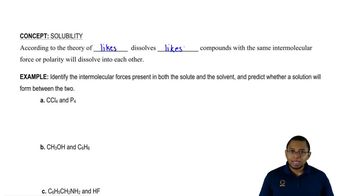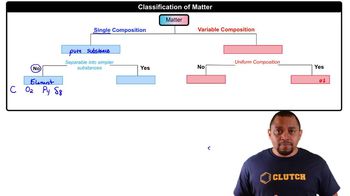Classify each of the following as an element, compound or mixture.
a) Ammonia, NH3
b) Gold bar
c) Orange juice
d) Wine
e) Saline solution
 Verified step by step guidance
Verified step by step guidance Verified video answer for a similar problem:
Verified video answer for a similar problem:



 1:34m
1:34mMaster Classification of Matter with a bite sized video explanation from Jules
Start learning